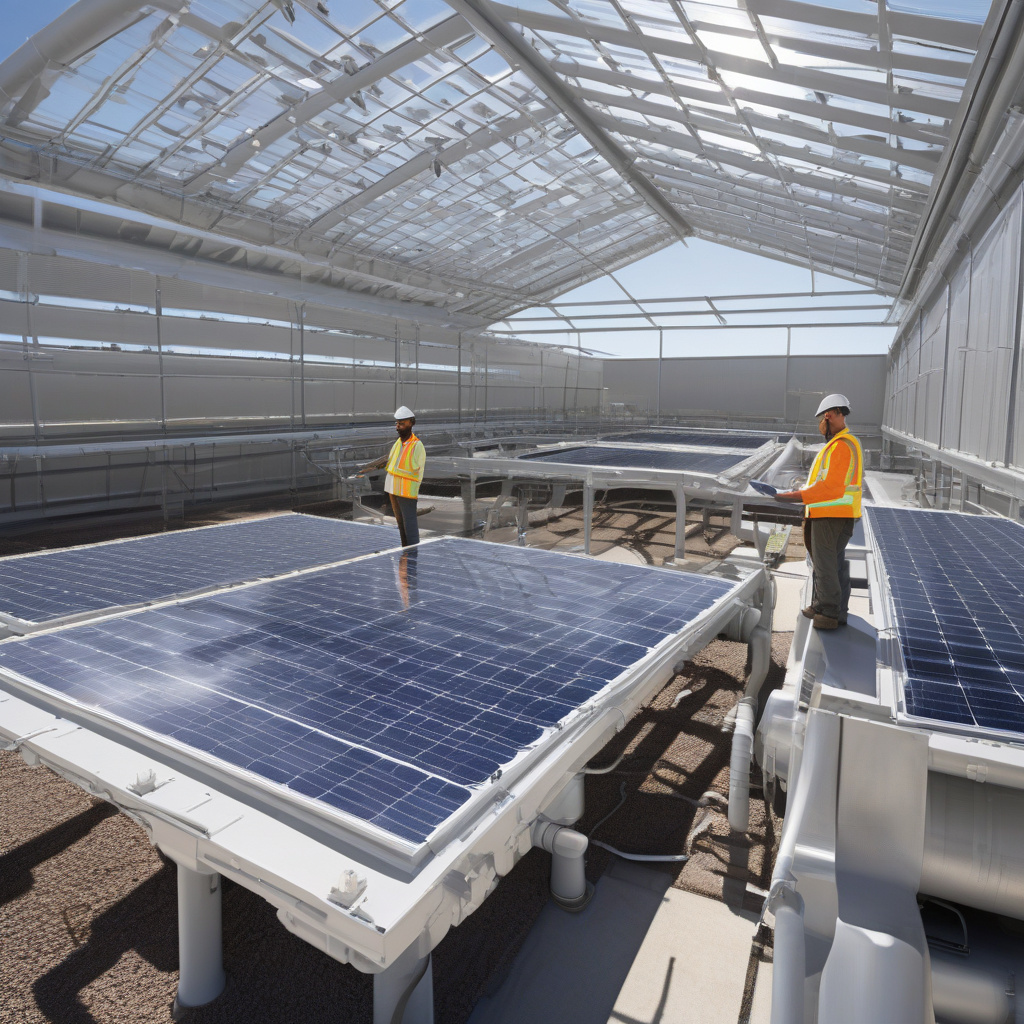Solar Canopy at US Wastewater Plant to Generate 325,000 kWh Power Annually
A new solar canopy installed at a wastewater treatment plant in City of Pendleton, Oregon, is set to revolutionize the way we perceive renewable energy generation. This innovative project is not only beneficial for the environment but also showcases the potential for sustainable solutions in unexpected places.
The solar canopy, located at the wastewater treatment plant, is designed to generate an impressive 325,000 kWh of power each year. This clean energy source will not only help power the plant itself but also contribute excess energy back to the grid, further promoting renewable energy usage in the region.
One of the key advantages of this solar canopy project is its dual functionality. By utilizing the otherwise unused space above the plant’s parking lot, the installation serves a dual purpose of providing shade for vehicles while harnessing solar energy. This innovative approach maximizes the efficiency of the infrastructure without requiring additional land use, making it a sustainable and cost-effective solution.
Moreover, the implementation of solar technology in a wastewater treatment plant demonstrates the versatility and scalability of renewable energy solutions. By integrating solar canopies into existing infrastructure, cities and municipalities can reduce their carbon footprint and reliance on traditional energy sources.
The City of Pendleton’s commitment to sustainability is evident through the adoption of this groundbreaking project. Not only does the solar canopy align with the city’s environmental goals, but it also sets a precedent for other communities looking to implement similar initiatives.
In addition to its environmental benefits, the solar canopy project is expected to have a positive economic impact on the region. By reducing energy costs and potentially generating revenue through excess energy production, the wastewater treatment plant stands to benefit financially from this investment in clean energy technology.
Furthermore, projects like the solar canopy in Pendleton highlight the importance of public-private partnerships in driving innovation and sustainability forward. By collaborating with energy companies and technology providers, municipalities can leverage expertise and resources to implement large-scale renewable energy projects.
As the global demand for clean energy continues to rise, initiatives like the solar canopy in Pendleton serve as a shining example of how innovation and collaboration can lead to a more sustainable future. By harnessing the power of the sun to generate electricity, communities can reduce their environmental impact and pave the way for a cleaner, greener tomorrow.
In conclusion, the installation of a solar canopy at the wastewater treatment plant in the City of Pendleton, Oregon, marks a significant milestone in the transition towards renewable energy sources. With its dual functionality, environmental benefits, and economic advantages, this project exemplifies the potential for innovation in unexpected places. By embracing sustainable solutions like the solar canopy, communities can work towards a more environmentally conscious future.
solar energy, renewable power, sustainable infrastructure, environmental innovation, clean technology












